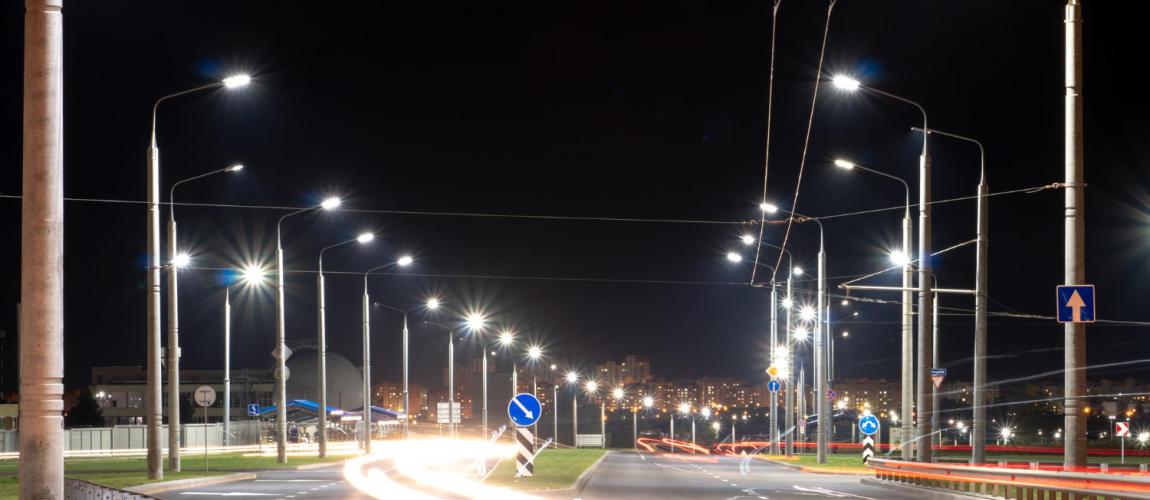Street Lighting Project, Nasik, Maharashtra, India

Photo Credit: Image by Freepik
On this page: A case study on Street Lighting Project, Nasik, Maharashtra, India. Find more at the Municipal Public-Private Partnership Framework - Project Summaries section for brief summaries of around 100 projects from around the world, examples of successes and challenges, as well as innovative ideas on solutions, or visit the Guidelines to Implementing Asset Recycling Transactions Section Overview and Content Outline, or download Full Version of the Report.
Project Summary: Background Nasik, in Maharashtra,, is among the most rapidly developing municipalities in India, which has led to shortages of power supply and, at the same time, increased the cost of electricity. To help address this problem, the Nasik Municipal Corporation (NMC) launched the first Energy Saving Company (ESCO) project to be implemented in Maharashtra state on a shared-savings basis. Sahastratronic Controls Private Limited (SCPL) was appointed by NMC as the ESCO to implement the project, which entailed upgrading the existing street lighting facilities. Before the project was implemented, NMC was using around 5,000 kW of energy per hour in a 12- hour day, throughout the year, for its street lighting, which translated into RS 5.5 million (USD 80,000 approx.) in monthly costs for this system. Project Structure After a thorough audit of all the street lighting locations, SPCL provided different options to NMC on how to achieve energy savings. The Corporation approved a specific type of panels that carry a new technology advanced enough to vary voltage according to different traffic conditions but maintaining the lumen requirements intact in each condition. Under an Energy Services Agreement (ESA), and following a build, operate, and transfer project structure, SCPL agreed to design, manufacture, supply, erect, commission and maintain 486 street light controllers at various lighting stations, which cover about 19,000 street lights, to improve street lighting efficiency, and guaranteed a minimum of 25 percent in energy savings to the municipality from these installations for five years. The project cost is estimated at INR 2 crores (USD 290,212), out of which INR 83 Lakhs (USD 120,483) is financed by a local bank, and the balance is paid by SCPL. According to the ESA, NMC would issue a noobjection certificate for mortgaging assets owned by SCPL set up in the NMC area, in an agreeable arrangement to the lender. In exchange, NMC required SCPL to execute an indemnity bond to compensate NMC against all transactions by SCPL to raise funds for the project. To recoup SCPL’s investment in the installation of the controllers, cover its operation and maintenance costs, and obtain a reasonable return on investment, SCPL is entitled to a share of the subsequent energy savings for a period of five years, at the conclusion of which ownership and control of the installations would transfer to the NMC. SCPL’s share in the savings is progressive, as follows: 1 70% 30% 2 60% 40% 3 50% 50% 4 35% 65% 5 19% 81% After the completion of Phase 1 in March 2004, 361 streetlight controllers had been installed, covering 12,000 streetlights. An additional 125 street light controllers operating 7,000 street lights were installed by the end of Phase 2, in November 2005. The total load under the project is 3.8 MW. Lessons Learned Through 31 March 2007, the savings achieved in both phases was INR 48.1 million (USD 670,000) and the average energy cost savings per year has been 31 percent, with peak savings for some subsections reaching as high as 44 percent. The value of the savings achieved in both phases per year totaled INR 16 million (USD 232,170). By 31 March, 2008 SCP has repaid INR 7.5 million out of the total assistance of INR 8.3 million sanctioned.1 This was the first energy savings company project in India to be implemented under the concept of sharing basis. Its successful energy-saving results and timely repayment of debt to the lenders has made it a role model for other municipalities throughout the country. Footnote 1: Source(s) accessed on January 24, 2019 http://smartcities.gov. in/upload/uploadfiles/ files/Compendium_of_ PPP_CasesMoUDs.pdf http://www.cips. org.in/documents/ DownloadPDF/ downloadpdf.ph p?id=232&cat egory= Urban+Governance
Year
NMC SHARE
SCPL SHARE
This is a new section of the PPPLRC website and is currently in draft form. Your feedback is welcome: If you would like to comment on the content of this section of the website or if you have suggestions for links or materials that could be included please contact us at ppp@worldbank.org.
To find more, visit the The Municipal Public-Private Partnership Framework - Project Summaries section, the Guidelines to Implementing Asset Recycling Transactions Section Overview and Content Outline, or download Full Version of the Report.
Updated: March 9, 2024